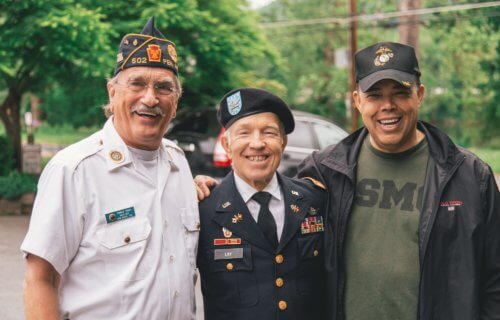NASHVILLE, Tenn. — The coronavirus pandemic took a heavy toll on all kinds of groups in 2020 — including U.S. veterans. A new study reveals deaths among military veterans increased by 16 percent last year. Despite that saddening rise, researchers from Vanderbilt University Medical Center note that veterans actually fared far better than the general population during the health crisis.
According to a review of data from the Veterans Health Administration (VA), veterans who make use of VA services had a better survival rate than the rest of the public. While deaths among veterans using the VA jumped by 16 percent in 2020, that number was 23 percent among the general population.
The team from VUMC and Boston University adds this is despite the fact that veterans typically have a higher number of health conditions which put them at higher risk of dying from COVID-19. These include old age, hypertension, diabetes, and obesity. Researchers conclude that the VA system appears to have performed better than the rest of the American health care system when it come to preventing deaths during the pandemic.
“This suggests the Veterans Health Administration performed better than expected,” reports VUMC assistant professor of health policy Kevin Griffith, PhD, in a university release.
“Despite VHA-enrolled veterans having a higher prevalence of risk factors for severe COVID-19 illness, their rate of excess deaths was markedly lower than what was observed in the general population.”
Did the VA do a better job of preparing for COVID?
Study authors examined the health of 11.4 million veterans between 2016 and 2019 at a county level. From there, they created a mathematical model to predict the death rate of veterans between March and December 2020 — covering the critical portion of the COVID-19 pandemic. During that time, COVID cases filled hospitals worldwide, but patients needing critical care for other conditions also filled ICUs as well.
“We know that when hospitals and ICUs are full both sicker and healthier patients die at higher rates for many diseases, not just COVID,” Griffith says.
In total, the study estimates that 426,069 veterans died last year from all causes, including COVID-19 infections. That’s over 51,000 more veterans than models predicted without the virus being present. Griffith’s team notes that veterans living in the Great Plains faced a higher risk of death last year, where COVID rates were higher among the population.
Although the team did not arrive at a specific explanation as to why VA members fared better than the average American, BU doctoral candidate Yevgeniy Feyman notes that the VA provided veterans with several useful tools during the early days of the pandemic.
“For instance, many in the U.S. lost or were forced to switch health insurance plans due to layoffs — while in the VA access isn’t conditional on employment,” Feyman explains. “The VA mounted a large, national response to COVID-19 early on, even in areas where the pandemic wasn’t bad yet and had existing telehealth infrastructure they could rapidly scale that many community-based providers did not already have in place.”
The findings appear in The Lancet Regional Health – Americas.
